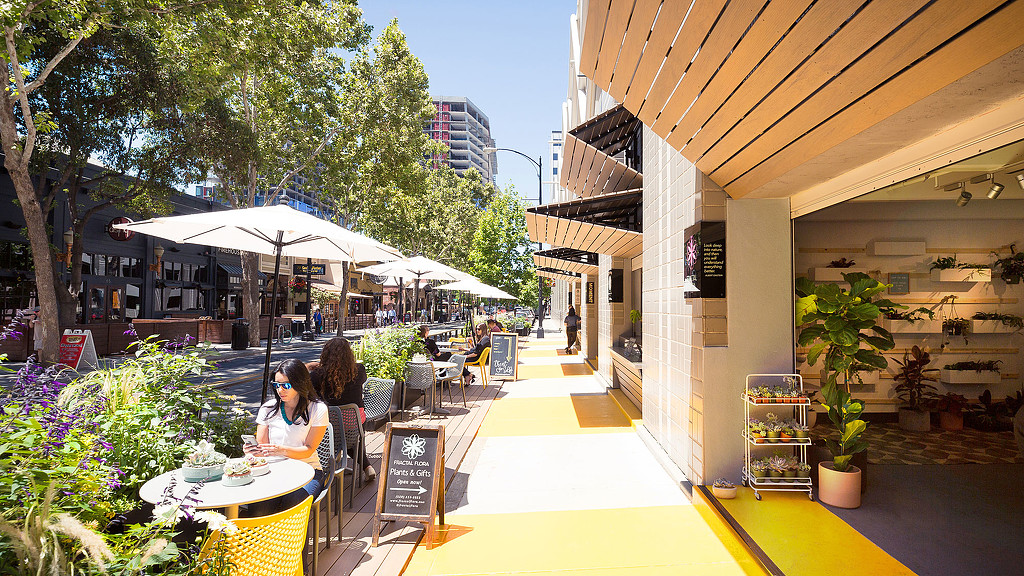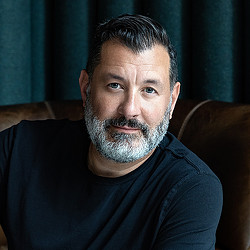Why People-First Design Is Key to San Jose’s Future
February 05, 2021 | By Peter Weingarten
With a robust vaccination rollout and easing of lockdown restrictions on the horizon, we are optimistic about returning to work, dining, travel, and other life activities. One of the big takeaways from the past year is a recognition of how much we enjoy human contact, a sense of belonging, and the importance of community. As we come together again, the fundamental need for reconnection is placing greater value on real estate and place. That’s why people-first design is such a great opportunity now — design solutions that prioritize human experience offer the best opportunities to emerge stronger from the crisis. Through this lens, we can reimagine the future of our cities.
At the heart of Silicon Valley, the city of San Jose is a place of human connection — a warm and diverse community with the ease of suburbia at the nexus of the innovation economy. At a time of global pandemic and sheltering in place, when connection to people and wellness are so valued, the comforts and energy of this type of urban place seem all the more attractive.
Our role as designers is to keep cities attractive and livable so that we can reap the benefits of density and community while adding value and return on investment to all stakeholders. We can envision a San Jose that is the perfect model of a city forged by an agricultural valley, and now surrounded by Silicon Valley, a generator of skills, energy, knowledge, profits, and sustained reinvestment.
San Jose offers a confluence of research and academic institutions and a technology-inspired entrepreneurial spirit that is a key building block for future growth and expanded opportunity. People, and their ability to connect, are at the center of life, innovation, growth, and prosperity. Cities enhance that ability by connecting people at a massive scale, and San Jose’s innovation economy has led to notable GDP growth, spurred in part by these connections.
Human-centric design transforms the places where we work and liveTop-performing companies, many of whom are based in Silicon Valley, recognize the value of connecting people with strategies to maximize knowledge sharing and community every day. To that end, we are currently helping to envision new work environments with “heart” and “soul.” “Heart” is in the physical spaces and amenities that connect us, that are attune to our basic needs for togetherness, collaboration, and comfort. “Soul” is how we infuse an understanding of shared purpose and company values that inspire us to belong and do great things. We are bringing connection and community together; however, there is still a gap.
According to the Deloitte 2020 Human Capital Trends report, 93% of respondents believe that a sense of belonging drives organizational performance, but only 13% believe their organization is ready to address this trend. This insight into what people want in the places where they spend significant time leads us to believe that the same value of placemaking and human-centric design that’s integral in the workplace needs to be as intrinsic in the city where we work and live.
Becoming a dynamic, multimodal cityAccording to Gensler’s City Pulse Survey 2020, people are rethinking their relationships with cities, and roughly two-thirds of urban residents who want to relocate say that the pandemic health crisis has made them more likely to move.
For cities like San Jose to attract new residents and retain current residents, they will need proactive design to address high housing costs, climate change, equity, strengthening transit links to the rest of the Bay Area, and providing better human-centric experiences that counter eroding quality of life perceptions. San Jose’s formal construct can be adapted to better align to the dynamic and agile culture of Silicon Valley. By introducing more organic and less ordered spaces, opportunities for discovery in the city can be enjoyed with a sustaining sense of relevance.
San Jose could become a multimodal environment, offering public spaces that can pivot to a variety of uses. Citywide smart information technology infrastructure could combine the built realm, everyday objects, and city residents to address social, economic, and environmental issues. 5G digital infrastructure will unlock the potential of enhanced and active wayfinding, improved monitoring of traffic and security, enhanced/augmented experiences for users and the places they visit, and support for autonomous vehicles. New modes of mobility, such as scooters and e-bikes will only increase.
Embracing the “20-minute city”Sorting out the future of vehicular circulation will reclaim more of our city for walkable solutions and help us shift the focus back to human experience. Notions like the “20-minute city,” with its sustainable proximity to necessities within a reasonable pedestrian journey, will create streets that are active and adjacent to porous, inviting, buildings that are buffered from vehicles. A polycentric city with distinct and equitable neighborhoods will emerge within a landscape that takes advantage of San Jose’s mild climate with parklets, bicycle lanes, and outdoor seating. San Jose has access to the knowledge and capital in our community to address these needs and good, sensitive design is critical to harvest their full potential.
With modest investment, a connective tissue can be created through incremental interventions that will string together current hot spots, like San Pedro Market, around the downtown core, filling gaps in the pedestrian experience with continuous activation. Providing a more diverse mix of uses with increased downtown housing will further charge activation of the core beyond peak times. Additional facilities and amenities will interconnect localized mobility choices with the broader regional transit that will further connect San Jose to the rest of the Bay Area and provide access to even more people. All of these approaches will greatly contribute to functional, safe, and vibrant local neighborhoods that support daily needs.
In order to realize this future for San Jose and other cities, we need to act with design solutions that support our humanity. Our first principles need to be: create great and equitable urban experiences for people, connect people so that they feel they belong to something great and are empowered to do great things, and enrich people’s lives.
For media inquiries, email .

